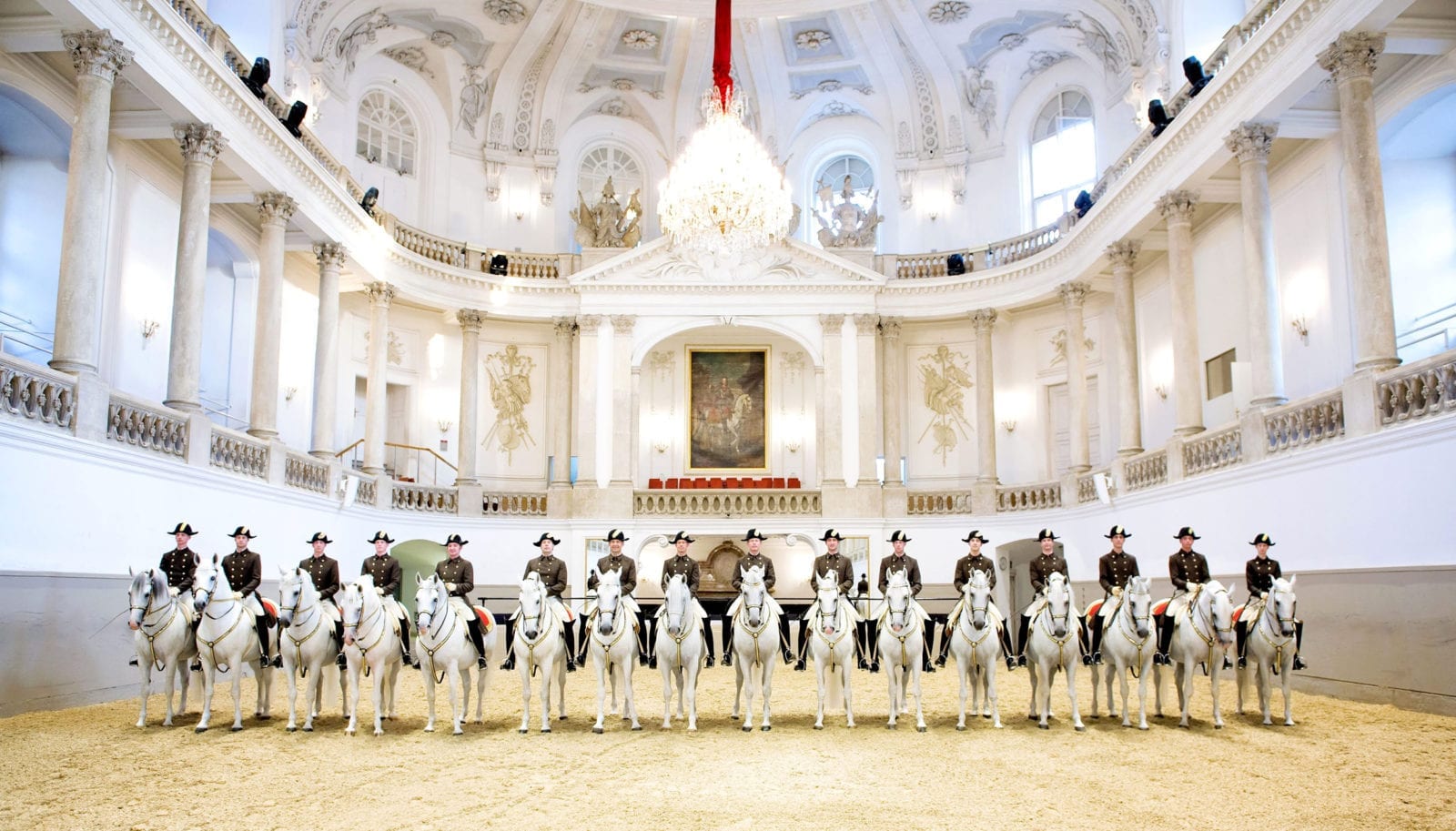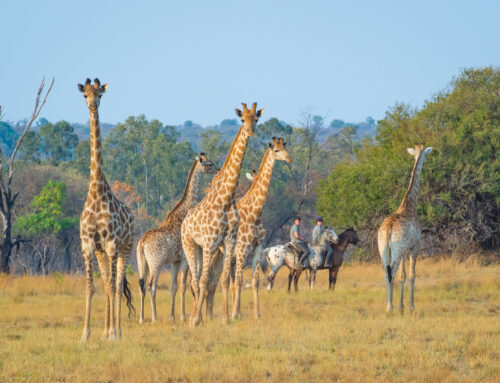For centuries, the Riding schools of Europe were established for the Kings and Queens and nobilities for the pleasure to watch the court equestrian games and the classical dressage. Horses were required to be highly schooled, talented, and a strong mount capable of moving swiftly and obediently offering a unique advantage over an enemy. For many centuries, wars were fought and won from the back of the horse and the horse is an important part of today’s history.
Horses were trained in the classical dressage for including the special movements, of the Capriole, Courbette, Pesade and Levade, designed for the sole purpose of transforming the horse into a weapon of war, which is still trained at the riding schools and demonstrated in the performances. Today the riding schools are open to the general public for tourism and promote classical dressage.
The four most prestigious classical riding academies in the world, are the Spanish Riding School in Vienna, Austria, The Cadre Noir in France near Saumur, The Portuguese School of Equestrian Art in Lisbon, and the Royal Andalusian School of Equestrian Art in Jerez, Spain.
Spanish Riding School – Vienna, Austria
The Spanish Riding School in Vienna is one of the most famous of the riding schools with the most magnificent riding hall in the world built in the 1700’s. An Austrian institution dedicated to the preservation of classical dressage and the training of Lipizzaner horses.
Today the Lipizzaner horses are still schooled in the tradition of classical dressage which has been trained for centuries dating back to wartime. The gala shows are held in the historical winter palace in the Hofburg. The arena with its large elaborate chandeliers and enormous white pillars where the audience is seated to watch the majestic white stallions with riders adorned in traditional brown tailcoats and a bicorne styled hat.
The gala performances are held on weekends and training sessions are offered during the week with behind-the-scenes stable tours. During these performances, the visitor witnesses the spectacular perfection of the “High School of Classical Horsemanship” with the Pas de Deux, Work in Hand, and on the Long Rein and the School Quadrille which is shown with eight stallions. The Levade, Courbette, and Capriole are the highlights of the “Schools above the Ground”.
Today Austria still continues to breed the Lipizzaner horse at Piber horse stud at Korflac.
The Spanish Riding School also has summer stables in Heldenberg-Wetzdorf-Lower Austria. The 68 resident stallions are taken there in July and August where the horses enjoy a rest and instead are hacked out in the nearby forest. During July and August, the school does not offer the Gala performances and training sessions.
Please ensure you book well in advance as the performances tend to book out early.
Address: Michaelerplatz 1, Unter der Michaelerkuppel, Vienna 1010 Austria
Website: https://www.srs.at
The Royal Andalusian School of Equestrian Arte
Real Escuela Andaluza del Arte Ecuestre is an institution dedicated to the preservation of the equestrian arts, in the Spanish tradition, based in Jerez de la Frontera, Spain. The school is devoted to conserving the ancestral abilities of the Andalusian horse, maintaining the classical traditions of Spanish baroque horsemanship, preparing horses and riders for international dressage competitions, and providing education in all aspects of horsemanship, coach driving, blacksmithing, the care and breeding of horses, saddlery, and the manufacture and care of horse harness.
The school is famous for its year-round performances of “How the Andalusian horses dance,” which has been in operation for over 40 years. Andalusian horses are all white and the riders wear typical 18th-century style costumes and perform to classical music written expressively for the performances.
The grey Andalusian horses perform in formations as well as more difficult classical dressage movements that are simply titled “Pas de Deux,” “Passage and Piaffe,” “Airs Above the Ground,” “Airs on Horseback” and a solo performance called “Fantasy,” among others. A salute to Spanish heritage complements the classical dressage program with a performance of doma vaquera (country dressage or Spanish cowboy) – the riding style that has been used for hundreds of years on working cattle ranches. Rounding out the rich celebration of horsemanship is a high-energy enganches (carriage driving) presentation and a group grand finale performed in unison called “Carousel.”
If you come on days that shows are not held there is other things to see including an audio-visual presentation, training sessions in the indoor arena, and a visit to the Royal School facilities, with Palace State Rooms, Gardens, Museum of Equestrian Art, Carriage Museum, Stables and the Tack Room.
Address: Royal Andalusian School of Equestrian Art Foundation, Avenida Duque de Abrantes S / N. 11407. Jerez de la Frontera.
Website: https://www.realescuela.org/en
Portuguese School of Equestrian Arte
The Portuguese School of Equestrian Art origins dates back to 1726, during the reign of King Joao V of Portugal. The school exclusively uses the Lusitano horse and only the bay horse colour from the Portuguese Alter Real State Stud. This breed has been used in classical dressage since the 18th century, performing classical dressage exercises alongside those from the Baroque period.
Morning training sessions are open to the public and highlight the daily work done by the riders at the EPAE to train and prepare horses of different ages for the school’s performances.
Gala performances are also held and last around 90 minutes and include such feats as the “airs above the ground”, equestrian exercises characteristic of the Baroque period, along with Court Games, the tournaments held between the 16th and 19th centuries to commemorate festive occasions. The performances are accompanied by lighting and sound effects that serve to enrich the choreography and the ambience. further enhanced by the costumes, saddles and harnesses worn by riders and horses, that are identical to those in use in the earliest days of Portuguese Equestrian. Please refer to the website for dates and times.
Address: Henrique Calado Riding Hall, Calçada da Ajuda, Belém, Lisbon 1300-006, Portugal
Website: https://www.parquesdesintra.pt/pt/parques-monumentos/escola-portuguesa-de-arte-equestre/
Cadre Noir of Saumur – France
The Cadre Noir is The Cadre Noir is a corps of ecuyers, or instructors, at the French military riding academy. A Cavalry school was created in Saumur to improve the mounted troops and to standardize the use of the horse in war. Faced with the urgency of retraining riders and horses, a body of instructors was set up, made up of several great civilian riding masters, out of the Manèges of Versailles, the Tuileries and Saint-Germain. Considered the elite of the period, they trained the officer pupils of the cavalry: In 1825, it was the birth of the Cadre Noir of Saumur.
The National Riding School was created by decree in 1972 under the charge of the Minister for Sport. The knowledge and expertise of the ecuyers of the Cadre Noir naturally formed the basis of the school, and in becoming the main body of instruction gave life to their traditions: to teach riding adapted to the period, yesterday military, today sport, and to train horses. In this way the Cadre Noir passed from military to civilian.
The Cadre Noir mainly uses Thoroughbreds, Anglo-Arabians, Hanoverians and Selle Français, but also keeps Lusitano horses to demonstrate the 16th and 17th century baroque style of riding.
Guided tours of the stables are available learning about the history of the school, the main arena, visiting the stables and tack room. Matinees are offered to watch the ecuyers of the Cadre noir in the main arena. The commentary provided by an ecuyer will give you an appreciation of the work involved in training the horse, jumping, in long reins, the airs above the ground, and classical riding. Official Black Frame Galas – Check the website for details and bookings are essential
Address: Av. de l’Ecole Nationale d’Equitation, Saumur, Pays de la Loire 49400, France
Website: www.ifce.fr/en/cadre-noir
Other riding schools
Lipica Horse stud
The Lipica horse stud in Slovenia boasts more than 440 years of history of the Lipizzaner and is where the Lipizzan breed originated in Europe. Around 1580 the Archduke Charles II, the third son of Emperor Ferdinand I of Habsburg decided to start a stud farm and this is when Lipica horse stud was first formed and 6 breeding stallions and 24 breeding mares were purchased from Spain.
It also follows the tradition of the classical riding and is open to tourists today. Offering weekly performances “The story of Lipica,” and daily training sessions as well as lessons and trail riding and stud tours with a 4-star hotel on site.
Address: Lipica 15, 6210 Sežana, Slovenia
Website: https://www.lipica.org/sl
The South African Lipizzaner’s – Cape town, South Africa
The South African Lipizzaner has an interesting story of how these iconic, European horses of history, battle, and art ended up all the way in South Africa. The story is fraught with bravery and daring escape. They were originally located in Kyalami, Midrand but moved in 2020 to near Capetown.
The riding academy has operated in the classical dressage for over 70 years. The first riding school was located in Kyalami, north of Johannesburg and moved to the Mistico in Capetown in 2020. The performances are by women who ride and train the 40 Lipizzaner stallions. Public performances take place every week on Sundays. There is also an affiliated stud farm that provides horses for the academy as well as preserving a valuable genetic outcross pool for European studs. The South African School is a not for profit unlike many of the other schools that are government funded. The performances with the famous white Lipizzaner stallions and include the art of high school riding and classical dressage similar to movements performed in Vienna at the Spanish riding school. The Mistico Equestrian centre is 40 minutes from Capetown.
Address: Mistico Equestrian centre, R312, Paarl, Western Cape, South Africa
Website: www.lipizzaners.co.za
Snaffle Travel has visited all the big four riding schools and we are happy to help you plan your travel to any of these destinations. Contact us at info@snaffletravel.com.au.
Photo courtesy Stefan Seelig & Vienna information centre










